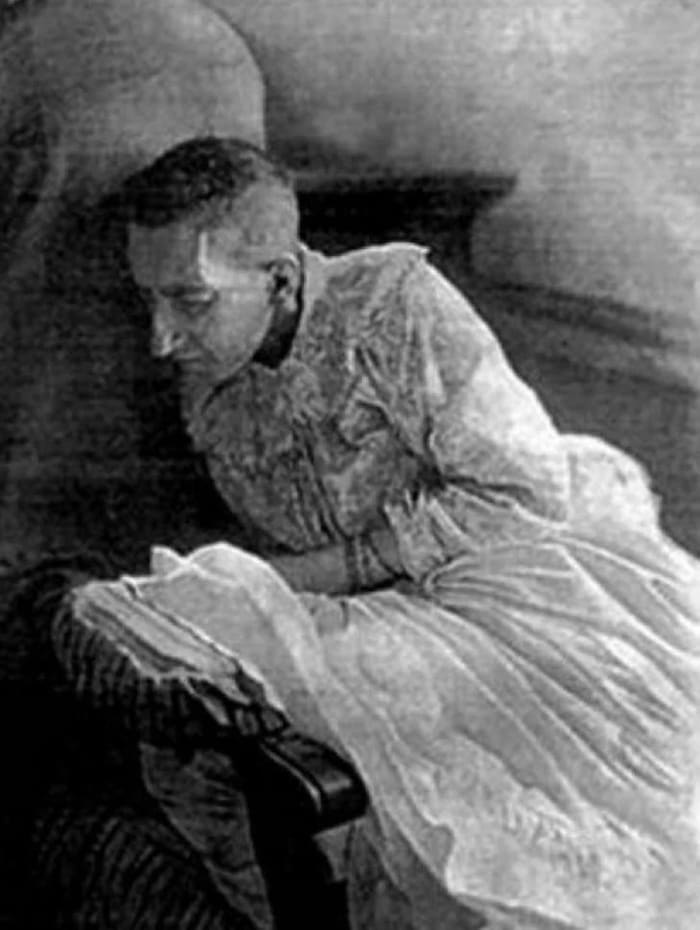Hidden Horrors Unveiled: The 25-Year Confinement of Blanche Monnier
In late 19th-century France, the captivating story of Blanche Monnier unfolded, turning the life of a once-beautiful socialite into a harrowing mystery. Known as “la Séquestrée de Poitiers” or “The Confined Woman of Poitiers,” Blanche’s life took a dark turn when she was locked away by her own family for an astounding 25 years.

A Prestigious Upbringing
Born on March 1, 1849, in Poitiers, France, Blanche Monnier hailed from a respected middle-class family. The Monniers, residing at 21 rue de la Visitation Street, were known for their conservative values and societal standing. Charles-Émile, Blanche’s father, headed the local arts facility, and the family received recognition for their virtues.

Forbidden Love and Heartbreaking Confinement
As Blanche approached 25 in 1876, she found herself at odds with her mother, Louise, and suffered from bouts of anorexia. Eager to marry her older lawyer beau against her mother’s wishes, Blanche’s determination sparked a tragic confrontation. Louise, vehemently opposing the union, locked her daughter in a tiny attic room with barricaded shutters, condemning her to darkness.
Blanche’s steadfast refusal to break off the engagement led to her mother and brother Marcel faking her death. Society believed the concocted story, and Blanche’s disappearance went unquestioned for 25 years. Tragically, her beloved passed away in 1885, unaware of her continued confinement.
Discovery of a Shocking Secret
The truth came to light on May 23, 1901, when an anonymous letter reached the Paris Attorney General, exposing the involuntary confinement of Blanche Monnier.
The letter stated:
“Monsieur Attorney General: I have the honor to inform you of an exceptionally serious occurrence. I speak of a spinster who is locked up in Madame Monnier’s house, half-starved and living on a putrid litter for the past twenty-five years – in a word, in her own filth.”
Despite the family’s respected reputation, the police investigated the chilling claims.
Upon entering the Monnier home, police encountered a putrid smell and uncovered Blanche in her early 50s, skeletal, covered in filth, and living in complete isolation. Weighing a mere 55 pounds, Blanche had endured 25 years without sunlight.
One police officer later recalled:
“The unfortunate woman was lying completely naked on a rotten straw mattress. All around her was formed a sort of crust made from excrement, fragments of meat, vegetables, fish, and rotten bread…We also saw oyster shells, and bugs running across Mademoiselle Monnier’s bed.
The air was so unbreathable, the odor given off by the room was so rank, that it was impossible for us to stay any longer to proceed with our investigation.”
Legal Repercussions and Aftermath
Madame Louise Monnier was arrested but succumbed to illness 15 days later, faced with public outrage. Marcel Monnier, initially convicted, was later acquitted on appeal due to the absence of a “duty to rescue” law. Blanche, freed from her nightmarish captivity, continued to suffer from mental health issues, ultimately passing away at 64 in 1913.

Blanche Monnier’s disturbing story left a lasting impact on literature and popular culture, influencing works like André Gide’s “La Séquestrée de Poitiers” and inspiring elements in various films and TV shows. The tragic tale of a woman confined for a quarter-century serves as a chilling reminder of the depths of human cruelty and resilience.
